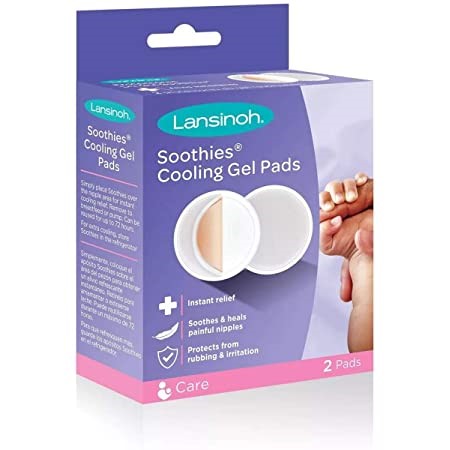Breastfeeding is one of the great joys of parenthood, by far the most nutritionally sound way of feeding your baby. So much so, that the World Health Organization recommends that children are exclusively breastfed for the first 6 months of their life.
It can be a challenge however, to find your breastfeeding groove so to speak, and chances are you’ll run into a few road blocks along the way.
A shallow latch is one of the most common problems parents encounter when breastfeeding, especially the first time around. Sometimes, all it takes to fix a shallow latch is for your baby to unlatch and relatch. Other times, you may need try a few more techniques and go through some trial and error before figuring out what works for you and your baby.
With a few of these tips and tricks, you should be on your way happy breastfeeding and fixing that shallow latch for good.
What is a Proper Latch?

A proper, deep latch is a crucial component of a positive breastfeeding experience. A deep latch makes it easier for your baby to feed properly, and keeps you from feeling pain and soreness while breastfeeding.
A deep latch involves your baby taking your entire nipple and at least in inch of your areola into their mouth. It should also have an asymmetrical appearance, with more of your areola visible from above than from below. Most importantly, it should feel comfortable.
How Do I Know If My Baby Has a Shallow Latch?
Essentially, a shallow latch happens when your baby doesn’t open their mouth wide enough to accommodate both your nipple and areola. Some tell-tale signs of a shallow latch are pinched, chaffed, or blistered nipples, and of course, pain while breastfeeding. Not seeing a difference or reduction in engorgement after feeding and a low milk supply may also be signs of a poor latch.
With a shallow latch, your baby might not be able to get enough milk, causing them to become frustrated and hungry quickly after feeding. They may lose weight or not put on the weight appropriate for their age. You might also hear a clicking or smacking sound coming from your baby as they attempt to nurse.
Certain conditions such as upper lip-ties and tongue-ties may make it difficult for your baby to latch deeply. Lip and tongue ties happen when the frenulum, which a line of tissue that anchors structure the tongue to the floor of the mouth and the upper lip to the gum, is abnormally short or thick. Sometimes, they may not look very obvious to the untrained eye, so it’s worth bringing up at your next pediatrician’s visit.
Certain in-born conditions, such as a cleft lip and/or palate may make it difficult for babies to achieve a deep latch and produce enough suction to sufficiently suck milk from their parent’s breast. Certain conditions such as down syndrome and cerebral palsy which can cause low muscle tone (hypotonia) can also contribute to shallow latch problems. In cases such as these, a lactation consultant may help you find ways to fix a shallow latch for good.
Ways to Fix a Shallow Latch for Good
-
Try Again
Sometimes, fixing a shallow latch is a simple as having your baby unlatch and relatch.
Before pulling your baby away from your breast, insert a clean finger between your breast and their gums first to break the suction. Keep your finger in place until your nipple is completely out of their mouth to keep them from clamping down again.
Now that you’ve removed your baby’s shallow latch, you can try getting them to latch on again. If you still aren’t getting a deep latch after a few tries, it may be time to try another fix.
-
Try a New Breastfeeding Position

Changing breastfeeding positions and holds can help remedy different problems, including a shallow latch. Laid-back breastfeeding is often the first position parents will use right after giving birth, as it incorporates skin-to-skin contact and encourages a baby’s natural feeding reflexes.
Cradle and cross-cradle holds are also common breastfeeding positions. These positions have you sit upright, giving you a better view of your baby’s mouth and your breast, which will ultimately allow you to position your baby’s mouth over your breast better.
The Football hold, as the name suggests, has you hold your baby under your arm, the same way you would hold a football. This position is particularly useful for parents who have had c-sections, as it keeps pressure off of the incision. Twin parents may also enjoy the football hold, as it allows 2 babies to nurse at the same time.
Some parents who have had c-sections prefer to nurse in a side-lying position, as it keeps weight off the incision and prevents pain. You and your baby both lie on your sides facing each other, with their head at the level of your breast.
Babies who are born with low muscle tone (hypotonia) may have trouble getting a deep latch and creating enough suction to suck milk from the breast. Certain positions, such as the dancer hand position allow you to support your baby’s cheeks and jaw, helping them latch on deeply and create enough suction to pull milk out of your breast and feed.
-
Incorporate Skin-to-Skin Contact
Skin-to-skin contact helps calm you and your baby, making it an easier process for both of you. Lying your baby on your bare chest also stimulates the rooting reflex, which is a natural feeding reflex which helps your baby find your breast and nipple.
-
Start Feeding at the First Signs of Hunger
Babies communicate their hunger by crying and becoming fussy. Getting a successful deep latch becomes nearly impossible with a crying, screaming baby. It will be infinitely easier to get a deep latch if you start when you and your baby are calm.
Pay attention to your baby’s hunger cues. Lip smacking, moving their hands to their mouth, sucking on their fingers, and turning their head from side to side, and being more alert and active are a baby’s ways of signaling hunger. For newborn babies, be ready to feed them right after they wake up.
-
Watch Your Baby’s Mouth
This is a great way to fix a shallow latch. Instead of immediately bringing your baby’s mouth to your breast, use your nipple to tickle their nose and lips first. This will activate their rooting reflex and cause them to open their mouth wide. Once they open their mouth to the widest point, quickly bring their mouth to your breast.
Your baby’s lower lip should be the first part of their mouth that touches your breast. Aim your baby’s lower lip towards the base of your areola, not the nipple. This will help your baby take more of your breast into their mouth, creating a deeper, more comfortable latch.
-
Get Some Breastfeeding Accessories
While breastfeeding tools and accessories won’t exactly solve a shallow latch, they can make breastfeeding an overall more comfortable and enjoyable experience.
Using breastfeeding accessories such as breastfeeding pillows can help support your baby’s weight and make breastfeeding for long periods more comfortable. If you have a slow let-down reflex that is frustrating your baby, using a breast pump to express a small amount of breastmilk right before feeding can help them get a better flow rate. A warm compress can also help open up milk glands and promote let down.
If you’ve been struggling with fixing a shallow latch, you’ve probably dealt with sore and raw nipples at some point. Gel pads such as these can be put in the fridge to provide cool relief from breastfeeding nipple soreness. As an added bonus, these cooling gel pads are safe for both parent and baby, are vegan, can be reused for up to 72 hours.
Lansinoh Soothies Breast Gel Pads for Breastfeeding and Nipple Relief

-
Get Help from a Professional

Keep in mind that breastfeeding is not the world’s most straightforward process. It may take some practice and experimentation to figure out what works best for your family and fix that shallow latch for good.
If you are having trouble with fixing your baby’s shallow latch, there isn’t any harm in seeking professional help. An IBCLC or International Board-Certified Lactation Consultant can pinpoint and solve your breastfeeding issues and help you find the most optimal and effective breastfeeding techniques for you and your baby.
Even better, have someone coach you through breastfeeding and proper latching before you even leave the hospital with your baby. This will allow you to have correct breastfeeding technique right from the get-go, and hopefully increase your likelihood of having a worry-free breastfeeding experience.